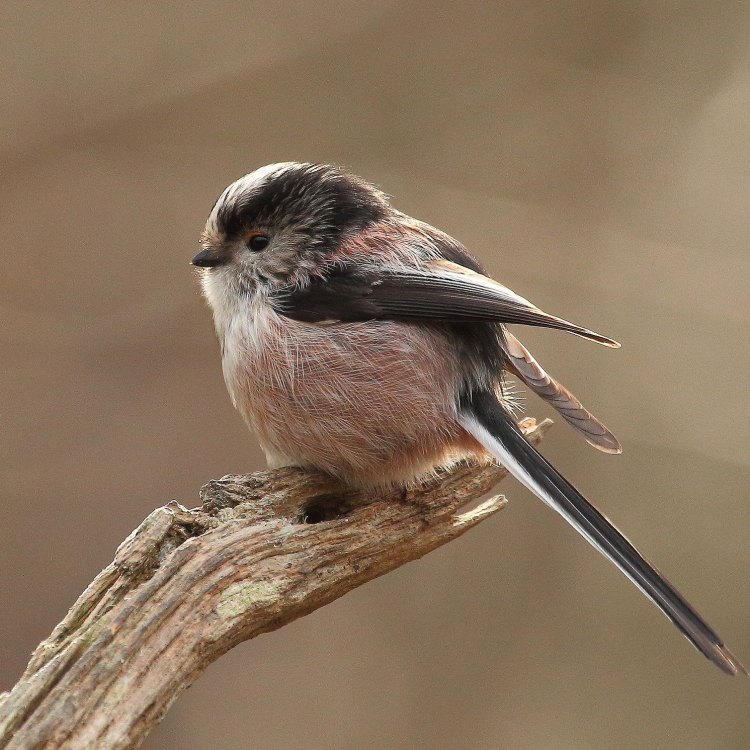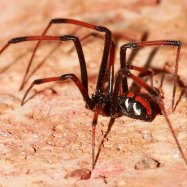
Long Tailed Tit
13-15 cm
The Long Tailed Tit is a charming little bird found across Europe and Asia. With its small and compact body, this member of the Aegithalidae family measures 13-15 cm in length. Its long tail, black and white feathers, and lively personality make it a delight to watch in nature. Keep an eye out for this feathered friend on your next nature walk. #LongTailedTit #Aegithalidae #Birdwatching
Animal Details Summary:
Common Name: Long Tailed Tit
Kingdom: Animalia
Habitat: Woodlands, hedgerows, gardens
The Dainty and Colorful Long Tailed Tit: A Bird Worth Knowing About
Nature is full of mysteries and wonders, and one of the most fascinating creatures is the long tailed tit. With its dainty appearance and colorful feathers, this tiny bird is a delight to behold. But there's more to the long tailed tit than meets the eye. In this article, we'll delve into the world of this charming avian and learn about its unique features, behavior, and characteristics Long Tailed Tit.Unveiling the Long Tailed Tit's Taxonomy
According to its scientific name, the long tailed tit is known as Aegithalos caudatus. It belongs to the kingdom Animalia, phylum Chordata, and class Aves. This bird is a member of the Passeriformes order, which includes more than half of all bird species. Within the Passeriformes order, the long tailed tit is part of the Aegithalidae family, a small family comprising only four species of passerine birds.Home and Habitat of the Long Tailed Tit
The long tailed tit is widely distributed throughout Europe and Asia, with its range stretching from the United Kingdom to parts of China and Japan. In Europe, this bird can be found in almost every country, making it one of the most widespread birds on the continent.In terms of habitat, the long tailed tit is highly adaptable and can be found in various environments. However, it is most commonly found in woodlands, hedgerows, and gardens. These birds are also known to inhabit urban areas, as long as there are suitable nesting sites and enough food sources Longnose Gar.
Feeding Method of the Long Tailed Tit
One of the most interesting aspects of the long tailed tit is its feeding behavior. These birds are primarily insectivorous, and they have a unique method of gathering food. Unlike other birds, the long tailed tit forms small and highly coordinated flocks, with up to 20 individuals, to forage for food.These flocks move through the trees together, with each member taking turns to glean insects and spiders from branches and leaves. Apart from insects, the long tailed tit also feeds on berries and seeds, especially during the winter months when insects are scarce.
Revealing the Colorful World of the Long Tailed Tit
The long tailed tit is a truly stunning bird, with a unique coloration that sets it apart from other species. Despite its name, the long tailed tit is not the only bird with a long tail. However, its long tail is proportionally longer than most other birds, accounting for almost half of its overall length.This bird's colorful plumage is a sight to behold, with its head, neck, and long tail feathers being a soft shade of white. The lower half of the long tailed tit's body is a beautiful pink, while its wings and back are a mix of black and white. These vibrant colors make it easy to spot these birds among the trees, but they also serve as a form of camouflage, blending in with pink flowers and white leaves.
The Adorable and Unique Body Shape of the Long Tailed Tit
Apart from its stunning colors, the long tailed tit is also known for its adorable body shape. This bird is small and compact, measuring only 13-15 cm in length. Its small size makes it one of the smallest passerine birds in Europe, with only a few species such as the goldcrest and winter wren being smaller.The long tailed tit's small and round body is enhanced by its long tail, giving it a charming and dainty appearance. It also has a short, stubby bill, ideal for picking off insects and probing flowers for nectar.
Exploring the Fascinating Behavior and Life Cycle of the Long Tailed Tit
Apart from their unique feeding behavior, long tailed tits are also known for their intricate nests. These birds create a spherical nest made of moss, lichen, and spider webs, with an entrance at the side. This nest is then lined with feathers, hair, and wool to make it soft and cozy for their eggs and young.The long tailed tit's breeding season begins in early spring, and a pair of birds will spend around two weeks building their nest. Once the nest is completed, the female lays a clutch of 6-12 eggs, and both parents take turns incubating them for 14-16 days.
Discovering the Long Tailed Tit's Geographical Distribution and Country of Origin
As mentioned earlier, the long tailed tit's range extends from the United Kingdom to parts of Asia. While this bird is commonly found in the United Kingdom, it is believed to have originated in Eastern Europe, with its closest relative being the Siberian long tailed tit.Despite this, the long tailed tit is a beloved bird in the UK, and its presence in the country is a testament to its adaptability and resilience. These birds have also been introduced to countries such as New Zealand and Canada, where they have managed to establish small populations.
Uncovering the Conservation Status and Threats to the Long Tailed Tit
The long tailed tit is not currently considered a threatened species, and its overall population is stable. However, there are some concerns regarding its future due to the loss of hedgerows and woodlands, which serve as important nesting and foraging sites for these birds.Climate change is also a potential threat, as it can affect the availability of insects and impact the long tailed tit's breeding success. These birds are also susceptible to harsh winters, which can impact their food sources and survival.
In Conclusion
In conclusion, the long tailed tit is a tiny and colorful bird with a fascinating set of features and behaviors. From its unique feeding method to its stunning coloration and adorable body shape, this bird is a true delight to observe. Its resilience and adaptability have made it a common sight in many countries, and we can only hope that it will continue to thrive in the future. So the next time you spot a long tailed tit while walking in the woods, take a moment to appreciate its beauty and uniqueness.

Long Tailed Tit
Animal Details Long Tailed Tit - Scientific Name: Aegithalos caudatus
- Category: Animals L
- Scientific Name: Aegithalos caudatus
- Common Name: Long Tailed Tit
- Kingdom: Animalia
- Phylum: Chordata
- Class: Aves
- Order: Passeriformes
- Family: Aegithalidae
- Habitat: Woodlands, hedgerows, gardens
- Feeding Method: Insects, spiders, berries, seeds
- Geographical Distribution: Europe, Asia
- Country of Origin: United Kingdom
- Location: Throughout Europe and Asia
- Animal Coloration: Pink, white, black
- Body Shape: Small and compact
- Length: 13-15 cm

Long Tailed Tit
- Adult Size: Small
- Average Lifespan: 2 years
- Reproduction: Monogamous
- Reproductive Behavior: Builds spherical nest made of moss and spider webs
- Sound or Call: High-pitched song
- Migration Pattern: Short-distance migrant
- Social Groups: Flocks
- Behavior: Highly social and active
- Threats: Habitat loss, harsh winters
- Conservation Status: Least Concern
- Impact on Ecosystem: Pollinates flowers
- Human Use: None
- Distinctive Features: Long tail and pink plumage
- Interesting Facts: Long Tailed Tits huddle together to keep warm during winter nights
- Predator: Birds of prey, domestic cats

Aegithalos caudatus
The Fascinating Long Tailed Tit: A Small Bird with a Big Personality
When we think of birds, we often picture large, majestic creatures soaring through the sky. But sometimes, the most fascinating birds come in small packages. The Long Tailed Tit (Aegithalos caudatus), also known as the Long-Tailed Bushtit, is a perfect example of this. This tiny bird, measuring only 11-15 centimeters in length, may be small in size, but it makes up for it with its big personality and unique features PeaceOfAnimals.Com.Found throughout Europe, Asia, and parts of Africa, the Long Tailed Tit is a widespread and common species. Despite facing some threats in their natural habitat, they are currently listed as Least Concern on the IUCN Red List, a testament to their adaptability and resilience. But what makes this little bird so special? Let’s dive into the world of the Long Tailed Tit and discover its fascinating features and behaviors.
A Small Stature with a Short Lifespan
As mentioned earlier, the Long Tailed Tit is a small bird, with an average adult size of 11-15 centimeters and a weight of just 7-10 grams. This makes it one of the smallest birds in its range, alongside other diminutive species such as the Goldcrest and Firecrest.Despite its small size, the Long Tailed Tit has a surprisingly short lifespan. On average, they only live for about 2 years in the wild. This may seem like a short time, but for a bird that is often preyed upon by larger birds and domestic cats, every day counts. In captivity, they have been known to live longer, with some individuals reaching up to 8 years Lakeland Terrier.
A Monogamous Reproduction and Unique Nesting Behavior
When it comes to reproduction, the Long Tailed Tit follows a monogamous mating system, meaning they mate with only one partner for an extended period. This behavior is common among many bird species, and it allows for a stronger bond between partners and better protection of their offspring.But what sets the Long Tailed Tit apart from other birds is their unique nesting behavior. They build spherical nests, known as “pocket nests,” made of moss, spider webs, feathers, and other materials. These nests can take up to three weeks to complete and are a true feat of engineering.
What’s even more fascinating is that Long Tailed Tits are known to cooperate during the nest-building process. This means that a group of Long Tailed Tits will work together to build a single nest, taking turns to collect materials and construct the nest. This cooperative behavior also extends to raising the young, with both male and female parents caring for the chicks.
High-Pitched Songs and Short-Distance Migration
One of the most distinctive features of the Long Tailed Tit is its high-pitched song. They have a wide variety of calls and songs ranging from trills and whistles to a “tsee-tsee-tsee” sound. These songs are often used to communicate within their flock and to attract potential mates.As for their migration patterns, the Long Tailed Tit is a short-distance migrant. This means that they only migrate short distances to find food and suitable habitats. Many parts of their range experience harsh winters, and during this time, they may move to warmer areas. But for the most part, they are non-migratory birds, preferring to stay in their established territories.
Highly Social and Active
The Long Tailed Tit is a highly social and active bird, often moving in flocks consisting of up to 20 individuals. These flocks are usually made up of family groups, and they work together to find food, defend their territory, and care for their young. Within these flocks, Long Tailed Tits show a high level of coordinated movement and vocalizations, further highlighting their social nature.Not only are they social, but Long Tailed Tits are also incredibly active birds. They are constantly on the move, hopping from branch to branch, and searching for insects and spiders to eat. They have a high metabolism, which requires them to eat almost constantly to maintain their energy levels. This makes them a vital part of the ecosystem, as they play a role in maintaining insect populations and are also pollinators of flowers.
Threats and Conservation Status
Like many other bird species, the Long Tailed Tit faces threats in its natural habitat. One of the main threats is habitat loss due to human activities such as deforestation and urbanization. This leads to a loss of suitable nesting sites and food sources, endangering the species' survival.In addition to habitat loss, harsh winters with extreme cold and lack of food can also pose a threat to the Long Tailed Tit. During these times, they may struggle to find enough food to survive, especially if they do not have access to bird feeders or other food sources provided by humans.
Despite these threats, the Long Tailed Tit is currently listed as Least Concern on the IUCN Red List. This is due to its widespread range and adaptability to different habitats. Several conservation efforts are in place to monitor and protect this species, including the creation of protected areas and the planting of native plants to provide suitable nesting sites and food sources.
Distinctive Features and Interesting Facts
As its name suggests, the Long Tailed Tit has a long tail relative to its small body size. Their tails can be almost as long as their body, giving them a uniquely elongated appearance. Another distinctive feature is their pink plumage, which can be seen on their cheeks, belly, and underparts. This pink color is caused by a pigment called astaxanthin, which the birds gain from consuming insects and spiders.Apart from their unique appearance, Long Tailed Tits also have some interesting behaviors. During cold winter nights, they huddle together in large flocks to conserve heat and keep warm. In fact, they have been observed forming a “roost ball” where multiple birds pile on top of each other to stay warm. This behavior not only benefits the individual birds but also helps to maintain the overall body temperature of the flock.
Predators and Human Use
Like many other bird species, Long Tailed Tits face threats from predators such as birds of prey and domestic cats. They are also at risk of predation during the nesting season, as their nests are vulnerable to predators such as squirrels and woodpeckers.Unlike other bird species, the Long Tailed Tit has no significant impact on humans. They are not hunted for food or any other human use. Instead, they serve as a source of joy and wonder for birdwatchers and nature enthusiasts, who are delighted by their charming appearance and social behaviors.
In Conclusion
The Long Tailed Tit may be small in size, but it has a big personality and unique features that make it stand out among other bird species. From their monogamous reproduction and cooperative nesting behavior to their high-pitched songs and highly social nature, there is much to learn and admire about these fascinating creatures. Despite facing some threats, their adaptability and resilience have earned them a spot as one of the Least Concern species, and it is our responsibility to ensure their survival for future generations to appreciate their beauty and importance in the ecosystem. So, the next time you spot a Long Tailed Tit in your backyard or while out in nature, take a moment to appreciate this tiny bird with a big heart.

The Dainty and Colorful Long Tailed Tit: A Bird Worth Knowing About
Disclaimer: The content provided is for informational purposes only. We cannot guarantee the accuracy of the information on this page 100%. All information provided here may change without prior notice.












